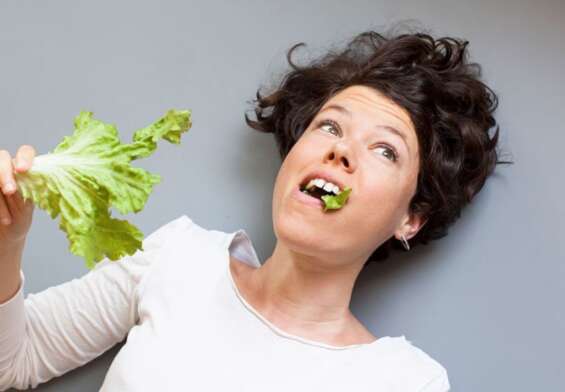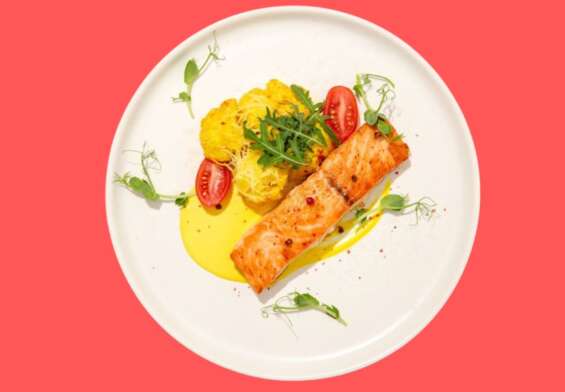
Low-Fat Diet: Fact or Fiction?
Low-Fat Diet is a diet that focuses on reducing fat intake in order to maintain a healthy weight. This type of diet is usually recommended for those who are trying to lose weight or improve their overall health. Low-Fat Diet can be beneficial in reducing the risk of certain diseases such as heart disease, diabetes, and stroke. It provides a balanced diet with plenty of fruits, vegetables, whole grains, and lean proteins. Eating fewer saturated and trans fats can help reduce cholesterol levels and lower the risk of chronic diseases. With careful planning and mindful eating, Low-Fat Diet can be an effective way to reach your health and weight goals.
The Benefits of Eating a Low-Fat Diet
If you’re looking to get a jump on the latest health trend, why not try eating a low-fat diet? Not only is it good for your health, but it can also be surprisingly delicious! Here are just a few of the benefits of reducing the amount of fat you consume:
You’ll save yourself some serious cash. Eating a low-fat diet can be a lot cheaper than buying all those unhealthy, high-fat foods. Sure, you may have to buy some extra fruits and veggies, but you’ll definitely be saving money in the long run!
You’ll have more energy. Eating a low-fat diet can help boost your energy levels and improve your overall health. No more afternoon naps or sluggish days!
You’ll be fighting against heart disease. Eating a low-fat diet can help reduce your risk of developing heart disease. Plus, food just tastes better when you know it’s good for your heart!
You’ll be staying hydrated. Eating a low-fat diet can also help you stay hydrated. After all, when you’re not eating fatty foods, there’s more room for healthy liquids, like water and green tea.
You’ll be able to enjoy delicious meals. Eating a low-fat diet doesn’t mean you have to give up on flavor! There are plenty of delicious, low-fat recipes out there to try. From zucchini noodles to roasted vegetables, you’ll never get bored with your meals.
So, what are you waiting for? Eating a low-fat diet can be a great way to stay healthy, save money, and still enjoy delicious meals. It’s time to take the plunge and start eating a more nutritious diet!
Tips for Making Low-Fat Meals Delicious
Get creative with seasonings! Use all kinds of herbs, spices, and flavorful sauces to add flavor and texture to low-fat meals.
Don’t skimp on the veggies! Load up on nutritious, low-calorie vegetables to add both flavor and bulk to your meal.
Make it colorful! Colorful ingredients make food more appealing, so use a variety of colorful fruits and vegetables to make your meals look as good as they taste.
Make your own sauces. Swap out heavy cream sauces for lighter versions made with vegetable stock, herbs, and spices.
Go nuts! Nuts are high in healthy fats and add texture and flavor to salads, stir-fries, and other low-fat meals.
Get cheesy! Low-fat cheese can be used to make creamy sauces, add flavor to soups, and top salads.
Get baking! Baked foods are generally lower in fat than fried foods, and they can be just as tasty.
Get fruity! Fresh fruit can make a delicious and healthy topping for oatmeal, yogurt, or ice cream.
Let the slow cooker do the work. Slow cooker meals are a great way to make low-fat meals with minimal effort.
Get creative with leftovers. Leftover meats, grains, and vegetables can be used to create new, delicious meals.
Low-Fat Cooking Hacks for Time-Crunched Home Cooks
Having too little time to cook? No problem! Here are some low-fat cooking hacks for time-crunched home cooks that you can whip up in a jiffy.
If you’re feeling lazy and don’t want to bother with prepping and cooking, never fear! You can always just grab some frozen low-fat meals from the grocery store.
If you still want to put in a bit of effort, why not try some egg-cellent hacks? Scramble up some eggs with some low-fat cheese and veggies for a delicious omelette.
Got a few minutes to spare? Whip up some oatmeal with low-fat milk and top it off with some fruits and nuts. Yum!
If you’re feeling more adventurous, why not try a no-cook salad? Just chop up some vegetables, add some low-fat dressing and voila!
Not a fan of salads? No worries, you can always make a low-fat soup. Just dump some canned tomatoes, low-fat broth and some spices into a pot and you’re done!
For a snack, why not try some low-fat yogurt with some fresh fruit and a sprinkle of granola?
Finally, if you’re feeling indulgent, why not whip up a low-fat version of your favorite dessert? Low-fat cheesecakes, brownies and ice cream are all possible with a little creativity!
So there you have it – low-fat cooking hacks that you can make in a jiffy! Now you can enjoy delicious low-fat meals without having to slave away in the kitchen for hours. Happy cooking!
Low-Fat Diet Meal Plans That Can Help You Reach Your Weight Loss Goals
Are you looking for a low-fat diet that can help you reach your weight loss goals? Well, you’ve come to the right place! We’ve got some amazing meal plans that are sure to get you on the fast track to success.
Breakfast: Start your day with a light breakfast that has just the right amount of fat. Try a smoothie made with low-fat yogurt, strawberries, banana, and a splash of almond milk. It’s packed with protein and yumminess!
Lunch: For lunch, try a turkey wrap with lettuce and tomato. You can also add a side of fruit or a small salad to keep your hunger satisfied.
Dinner: For dinner, try a tasty salmon fillet with a side of roasted veggies. It’s low in fat and has all the nutrients you need to keep your body running smoothly.
Snacks: Snacking is essential, so try some healthy options such as hummus and carrots or an apple with a teaspoon of peanut butter.
With this low-fat diet, you’ll be sure to reach your weight loss goals in no time! So don’t wait any longer, get started today and you’ll be slim and trim in no time!
The Most Popular Low-Fat Diet Tips from Nutritionists
Make friends with your blender! Low-fat smoothies are a great way to get in some extra nutrients without having to worry about the fat content. Just add some low-fat yogurt, fruit, and a few veggies to create a delicious and nutritious treat.
Don’t fear the fat-free! Many fat-free products are actually quite tasty and can be a great way to satisfy cravings without breaking the calorie bank.
Opt for lean proteins. Lean meats, eggs, and Greek yogurt are great sources of protein that won’t add too much fat to your diet.
Get creative with your salads. Salads don’t have to be boring! Add some nuts, seeds, fruits, and veggies to your salad to make it more interesting and flavorful.
Don’t forget about fiber. Fiber is essential for a healthy diet and can help you feel full longer. Try adding some oats, legumes, and whole grains to your meals to keep you feeling full.
Spice it up! Spices can add flavor without adding fat. Try adding some cayenne, chili powder, or cumin to your dishes to give them a flavor boost.
Get your snack on. Low-fat snacks like popcorn, fruit, and nuts can help keep you from feeling deprived and can be a great way to get in some extra nutrients.
Don’t forget about the veggies. Veggies are a great source of fiber and can help you feel full longer. Try adding some cooked veggies to your meals or having them as a snack.
Don’t forget about exercise. Exercise can help you burn off some of the extra calories and keep your metabolism running strong.
Have fun! Eating healthy doesn’t have to be a chore. Find recipes that you enjoy and get creative in the kitchen!
Understanding the Difference Between Low-Fat and Low-Carb Diets
When it comes to diets, it can be hard to keep up with all the different kinds out there. Low-fat and low-carb diets are two of the most popular, but what’s the difference between them? Well, here’s a humorous but informative guide to help you understand the differences between the two.
Low-fat diets are all about limiting the types and amounts of fat you eat. This means avoiding high-fat foods like butter, bacon, and cheese, as well as eating lean cuts of meat and low-fat dairy products. The idea behind this diet is that eating less fat can help you lose weight and reduce your risk of heart disease.
Low-carb diets, on the other hand, are all about avoiding carbohydrates. This means cutting out starchy foods like bread, pasta, and potatoes, as well as sugary foods like candy and soda. The idea behind this diet is that avoiding carbs can help you lose weight and improve your overall health.
So, when it comes to low-fat and low-carb diets, the main difference is the types of food you’re avoiding. With a low-fat diet, you’re avoiding high-fat foods, while with a low-carb diet, you’re avoiding carbohydrates. Both diets can be effective for weight loss and improving your health, but it’s important to talk to your doctor before starting either one.
How to Identify Unhealthy Low-Fat Foods
Low-fat foods can be a great way to eat healthier, but unfortunately, not all products labeled “low-fat” are actually good for you. Here are some tips to identify unhealthy low-fat foods so you can make healthier choices.
Check the ingredient list – If the first few ingredients are sugar, corn syrup, or hydrogenated oils, you know the food isn’t healthy.
Look for added vitamins and minerals – Many low-fat foods are fortified with vitamins and minerals to make up for the lack of nutrients caused by reducing the fat content. If the product doesn’t have any added vitamins or minerals, it’s probably not a healthy choice.
Read the nutrition facts – Compare the number of calories, sugar, sodium, and saturated fat between different brands to see which one is healthier.
Look for artificial sweeteners – If you see words like aspartame, acesulfame potassium or sucralose, it means the food contains artificial sweeteners. These are usually added to low-fat foods to make up for the lack of flavor due to reducing the fat.
Beware of “low-fat” claims – Just because a food is labeled as “low-fat” doesn’t mean it’s healthy. Many low-fat products are actually higher in sugar and calories than the regular version.
With these tips in mind, you can easily identify unhealthy low-fat foods and make better choices for your diet. Happy snacking!
Low-Fat Snack Ideas to Keep You Satisfied Between Meals
Air-popped popcorn: It’s light, airy, and totally delicious. Plus, you can add some extra flavor with a sprinkle of salt or a little bit of melted butter.
Frozen grapes: Yup, you read that right. The coldness and sweetness of frozen grapes can be just the snack you need to keep you feeling satisfied until your next meal.
Edamame: Whether you buy it fresh or frozen, edamame makes for a great low-fat snack. You can enjoy it plain or add some salt, pepper, or a light soy sauce for a little extra flavor.
Celery with a dollop of peanut butter: A classic snack that never gets old! Celery is a great source of fiber and that dollop of peanut butter is just enough to keep your taste buds happy.
Roasted chickpeas: These crunchy little snacks are packed with protein and fiber, so they’ll fill you up without packing on the pounds.
Fruit salad: Fruits are naturally low in fat and high in fiber, so why not whip up a quick fruit salad for a light and refreshing snack?
Skinny smoothies: Smoothies are a great way to get your daily recommended intake of fruits and veggies, without all the added fat. Just make sure you skip the sugary syrup and opt for some natural sweetness instead.
Greek yogurt: Greek yogurt is full of protein and calcium, making it the perfect snack to keep you satisfied until your next meal. Plus, it’s delicious!
Creative Ways to Add Healthy Fats to Your Low-Fat Diet
Eat a Banana Split with Avocado: Swap the ice cream for half an avocado and top it with nuts and a drizzle of honey.
Make a Salad with Coconut Oil: Replace the traditional oil and vinegar with a tablespoon of coconut oil for a tropical twist.
Enjoy a Popcorn Snack with Almond Butter: Spread a tablespoon of almond butter on your popcorn for a delicious, healthy snack.
Have an Avocado Toast for Breakfast: Spread mashed avocado on toasted whole-grain bread and top with an egg and a sprinkle of salt and pepper.
Indulge in a Chocolate Smoothie: Add a tablespoon of coconut oil to your favorite smoothie for a healthy dose of healthy fat.
Try a Hummus Wrap: Spread a few tablespoons of hummus on a wrap and add fresh vegetables for a light and flavorful meal.
Make a Trail Mix with Chia Seeds: Mix walnuts, almonds, chia seeds and dried fruit for a tasty and nutritious snack.
Go Nuts with a Fruit and Nut Bar: Choose a bar with at least 12 grams of nuts for a healthy and portable snack.
Have a Yogurt Parfait with Walnuts: Top plain yogurt with walnuts, honey and a few pieces of fresh fruit for a quick, healthy breakfast.
Create a Veggie Bowl with Cashews: Top steamed vegetables with a handful of roasted cashews for a delicious and nutritious meal.
Common Mistakes to Avoid When Following a Low-Fat Diet
Not Eating Enough Fat: Although it may seem counterintuitive, it’s important to include some healthy fats in your diet when following a low-fat diet. Healthy fats, such as those found in olive oil, avocados, nuts, and seeds, help your body absorb vitamins and minerals, provide energy, and reduce the risk of various diseases.
Eating Too Much Protein: You may be tempted to replace the fat in your diet with high-protein foods like meat, poultry, and eggs. However, too much protein can cause unwanted weight gain and other health issues. Stick to leaner proteins like fish, beans, and certain nuts and seeds.
Forgetting to Read Labels: When shopping for low-fat foods, don’t forget to read the label! Many pre-packaged and processed foods can contain hidden fats, sugars, and other unhealthy ingredients.
Ignoring Veggies and Fruits: Vegetables and fruits are nutrition powerhouses and should make up the bulk of your low-fat diet. Not only are they low in fat but they’re also packed with fiber, vitamins, minerals, and antioxidants.
Eating Too Many Low-Fat Processed Foods: Just because something is labeled “low-fat” doesn’t mean it’s healthy. Many low-fat processed foods are still high in sodium, sugar, and other unhealthy ingredients. Stick to whole, unprocessed foods whenever possible.
How to Balance Low-Fat Food Choices with Exercise for Optimal Weight Loss Results
If you’re looking to lose weight, you’ve probably heard time and time again how important it is to eat healthy, low-fat foods and exercise regularly. But let’s be honest – it’s not always easy to do both. Luckily, there’s a way to make it work! Here’s how to balance low-fat food choices with exercise for optimal weight loss results.
Step 1: Start with the low-fat food choices
This means filling your plate with lean proteins, fresh veggies and fruits, whole grains, and healthy fats like nuts, seeds, and avocados. You want to make sure that your plate is full of nutritious, filling foods that will help you feel energized throughout the day.
Step 2: Get moving!
Exercise is an important part of any weight loss plan, so make sure you’re getting in at least 30 minutes of cardio each day. This can be anything from walking to running, swimming to cycling. Whatever you choose, make sure you’re having fun and pushing your body to its limits.
Step 3: Incorporate some strength-training into your routine
Strength-training helps to build muscle and keep your metabolism revving. Incorporate exercises like squats, pushups, and planks into your routine for best results.
Step 4: Make sure you’re eating enough
It’s tempting to restrict your calorie intake when trying to lose weight, but it’s important to remember that you need to be consuming enough food to fuel your workouts. So make sure you’re eating enough to keep your energy levels up.
Step 5: Don’t forget the snacks!
Snacking can help keep you energized throughout the day and prevent you from feeling deprived. Choose healthy snacks like nuts and fruit to keep you feeling full and energized.
And there you have it! Balance low-fat food choices with exercise for optimal weight loss results. Now, let’s get out there and get healthy!
Conclusion
A low-fat diet can be a beneficial dietary choice for those looking to maintain a healthy weight and eat a balanced diet. It can help reduce the risk of certain chronic diseases, such as heart disease and diabetes, as well as help with weight loss. It is important to remember, however, that a low-fat diet should not be overly restrictive and should include a wide variety of nutritious and healthy foods. Eating a variety of whole grains, fruits, vegetables, lean proteins, and healthy fats can help ensure that a person gets all the nutrients they need while still following a low-fat diet.











